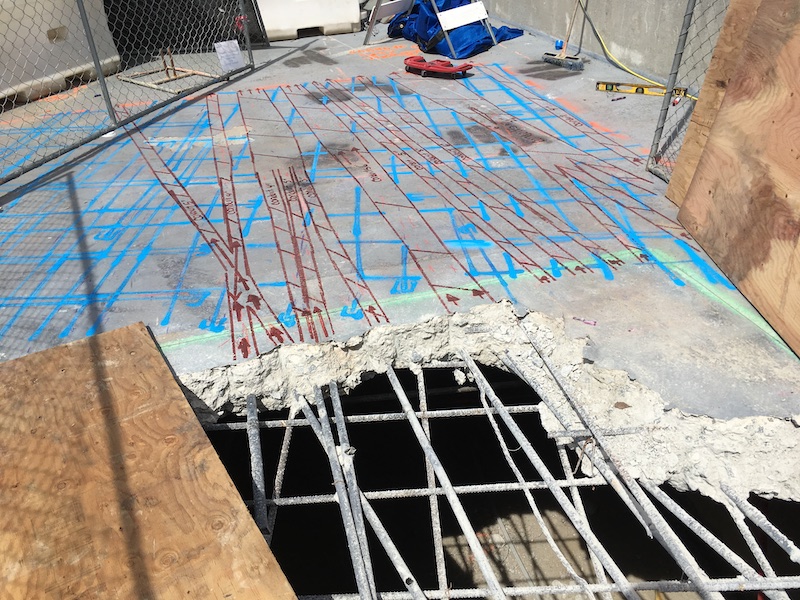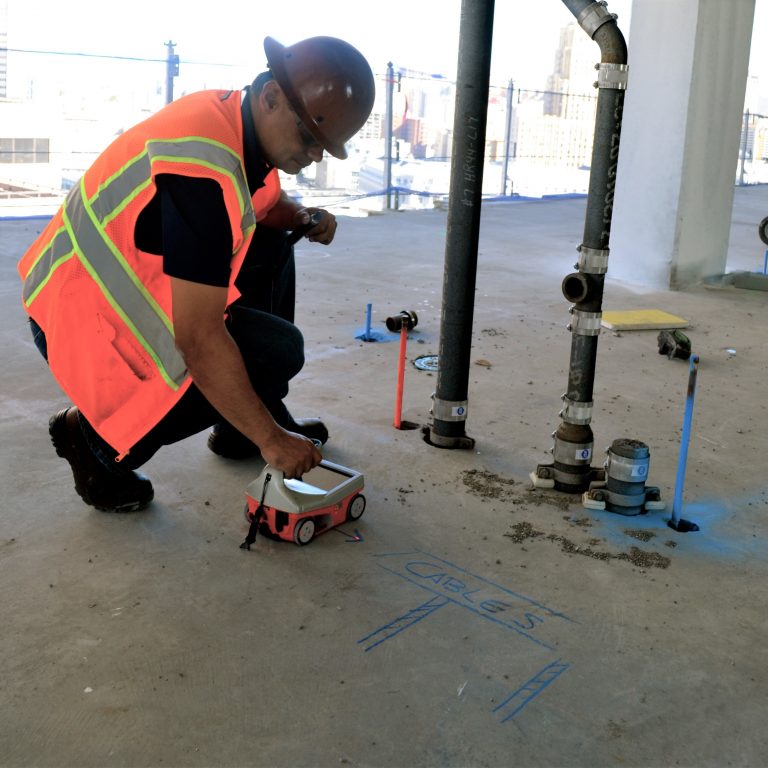Harness the Strategic Side of Concrete Scanning for Unparalleled Job Success and Quality Control
In the realm of modern building and facilities advancement, the application of concrete scanning innovation has actually arised as a crucial tool for ensuring job success and maintaining top quality requirements. The real power of concrete scanning lies not just in its capability to improve project outcomes but likewise in its ability to revolutionize traditional techniques, setting a new standard for accuracy and effectiveness in the building industry.
The Value of Concrete Scanning
Concrete scanning is an essential action in building and construction jobs to make sure the safety and security and integrity of frameworks. By utilizing numerous scanning innovations such as Ground Permeating Radar (GPR) and electro-magnetic induction, construction teams can non-destructively evaluate the subsurface of concrete structures to recognize possible hazards like rebar, avenues, or post-tension wires. This info is important for job designers, supervisors, and contractors to make enlightened decisions and stay clear of pricey blunders throughout the building procedure.
Among the primary reasons concrete scanning is so vital is its capability to stop mishaps and injuries on the building website. Accidentally puncturing an online electric channel or destructive post-tension cable televisions can have tragic repercussions, not only in terms of safety but also in terms of job hold-ups and financial effects. By performing extensive concrete scanning prior to any type of drilling, reducing, or coring tasks, construction groups can alleviate dangers and create a much safer working setting for everyone involved.
Along with safety considerations, concrete scanning additionally plays a crucial duty in making certain the lasting durability and quality of the framework. By detecting any abnormalities or problems concealed below the surface area, such as voids or delamination, very early treatment can be executed to attend to these problems before they intensify into more considerable problems. Eventually, buying concrete scanning is an aggressive action that can conserve time, money, and resources in the lengthy run, while likewise promoting the highest requirements of building and construction excellence.
Advanced Technology for Exact Outcomes

By including these innovative innovations right into concrete scanning practices, building and construction teams can enhance workflows, lower project delays, and make certain the general top quality and success of the project. The precision and efficiency supplied by these devices contribute dramatically to the project's success by helping with informed decision-making and enhancing top quality assurance steps.
Enhancing Project Effectiveness and Timelines

Additionally, concrete scanning makes it possible for teams to determine structural weaknesses and possible threats at an early stage, enabling timely removal and preventing accidents that might hinder task timelines. The real-time information given by scanning devices facilitates educated decision-making, leading to smoother sychronisation among various trades and stakeholders. This improved cooperation decreases conflicts, improves productivity, and eventually speeds up job shipment.
In addition, by proactively resolving concerns via concrete scanning, building groups can stick to routines better, minimize downtime, and enhance source allocation. The ability to spot hidden obstacles and validate architectural honesty efficiently adds to total job effectiveness and timelines, guaranteeing successful end results and client contentment.
Ensuring Safety And Security and Risk Mitigation

Risk reduction approaches can be enhanced with the thorough details provided by concrete scanning, allowing job teams to make educated decisions that reduce the likelihood of unanticipated events. In addition, by properly drawing up subsurface conditions, specialists can stay clear of expensive rework, hold-ups, and damages to existing structures, additionally contributing to total project safety and success. Executing concrete scanning as a regular technique not only ensures a safer job setting but additionally instills confidence in stakeholders concerning the job's dedication to top quality and risk administration.
Quality Control With Concrete Scanning
Concrete scanning plays a critical role in maintaining quality control requirements within building jobs. By using sophisticated scanning innovations such as Ground Passing Through Radar (GPR) and Concrete X-ray, project supervisors and engineers can ensure the stability and high quality of concrete structures. Through concrete scanning, possible issues, such as spaces, fractures, or enhancing bar blockage, can be discovered non-destructively, enabling prompt interventions to preserve the architectural honesty click now of the task.
Quality control via concrete scanning not only helps in recognizing existing problems yet additionally allows proactive actions to stop future problems that can compromise the security and durability of the structure. By carrying out complete scans at vital phases of building and construction, groups can verify the accuracy of architectural strategies, confirm the placement of essential aspects, and resolve any kind of discrepancies promptly. This positive technique reduces rework, minimizes pricey hold-ups, and inevitably leads to the shipment of top quality, sturdy structures that exceed or satisfy market standards.
Verdict
In verdict, concrete scanning plays an important duty in making sure project success, security, effectiveness, and quality assurance. The critical side given by concrete scanning allows for proactive danger reduction and boosts general job monitoring.
In the world of modern-day construction and facilities development, the application of concrete scanning innovation has actually emerged as a critical tool for ensuring project success and preserving quality standards. By including these advanced technologies right into concrete scanning practices, building and construction teams can simplify process, minimize task delays, and make sure the total quality and success of the project.Offered the imperative nature of project performance and timelines in view it construction administration, the emphasis currently shifts in the direction of making sure safety and mitigating threats within the job setting.Concrete scanning plays a critical function in supporting top quality assurance standards within building tasks. By making use of advanced scanning modern technologies such as Ground Permeating Radar (GPR) and Concrete X-ray, job managers and engineers can ensure the integrity and quality of concrete structures.